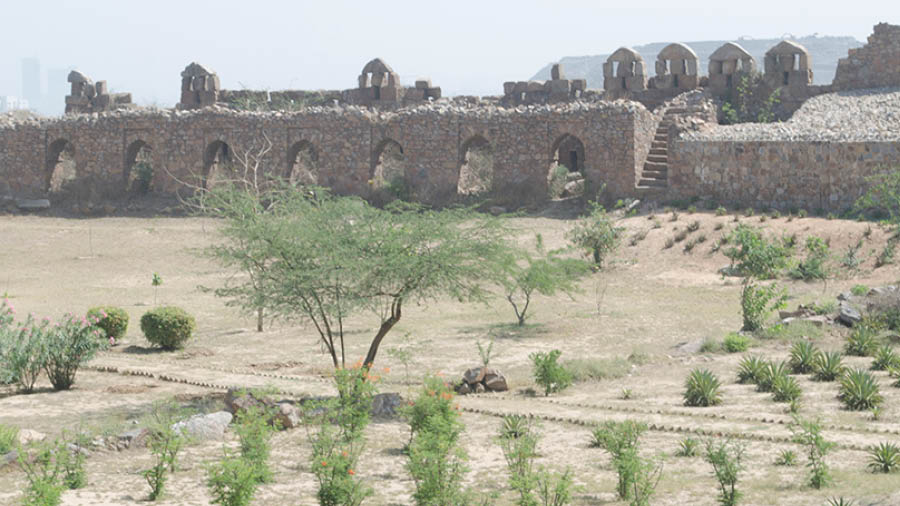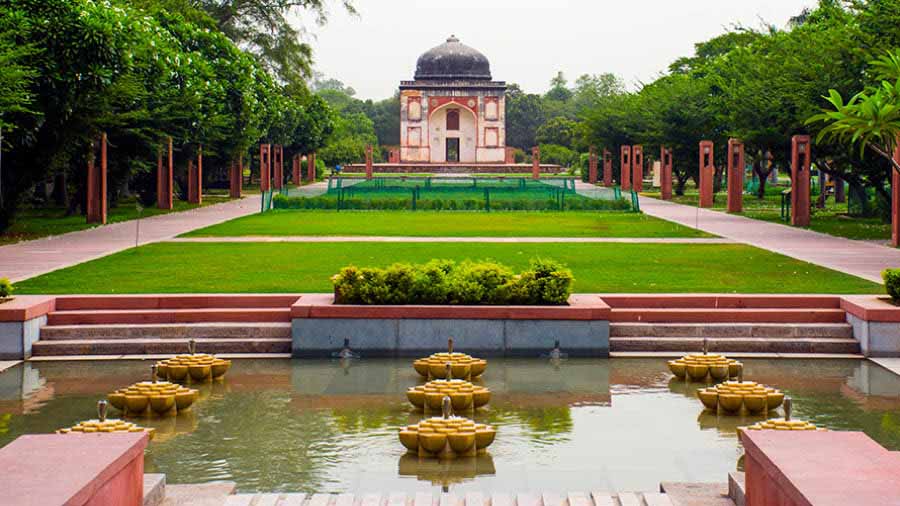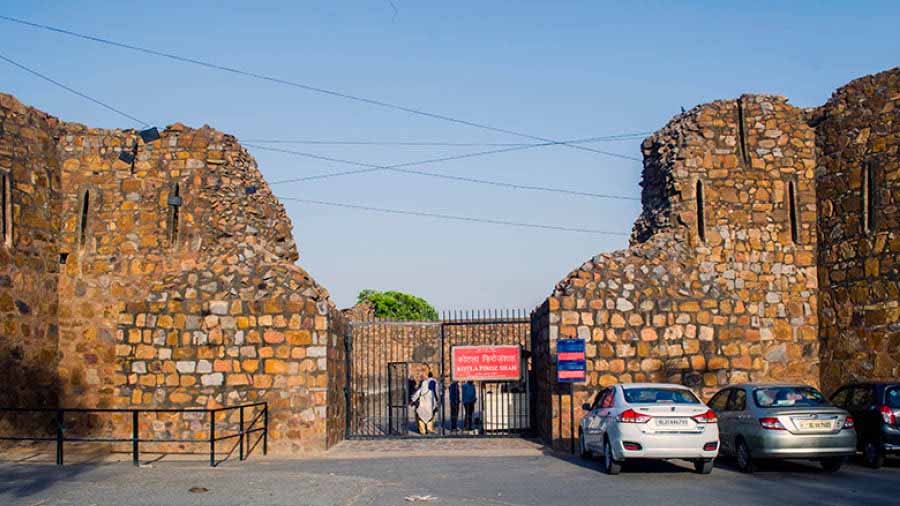From the massive bastions of Tughlaqabad to the elegant sandstone walls of the Red Fort and from Feroz Shah Kotla, the abode of the djinns, to the elegant structures of Purana Qila, Delhi has its share of forts. Apart from the above-mentioned massive citadels, Delhi also has its share of smaller and unknown forts. These smaller forts are dedicated to the most unusual of persons and falls off the tourist track.
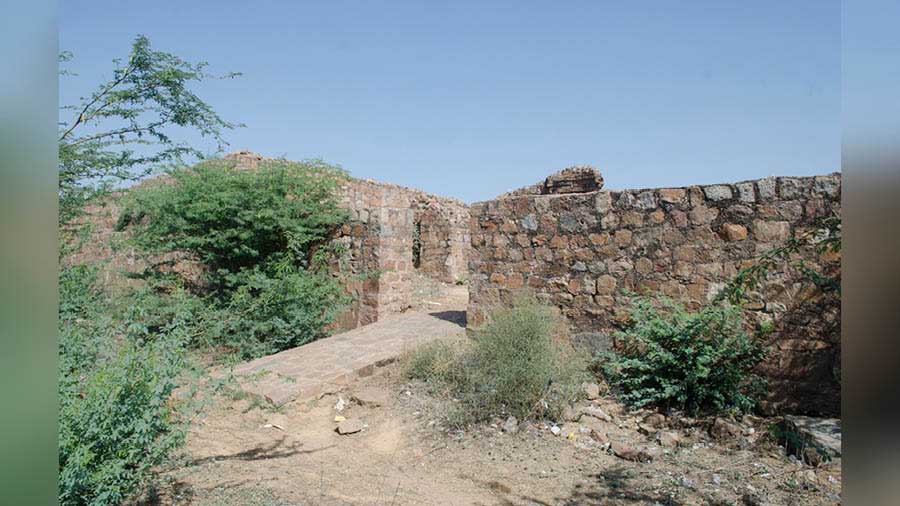
An entrance and walls of Nai ka Kot
Nai ka Kot and Adilabad Fort are two such small and less-visited forts of Delhi. They are located on the Mehrauli – Badarpur Road and lie in the shadows of the mighty Tughlaqabad Fort, which was built by Ghiyasuddin Tughlaq (reign: 1312 – 25).
Nai ka Kot

The neglected interiors of the Nai ka Kot
Barbers probably played an important role in the royal courts of Delhi and no wonder there are several monuments dedicated to them. Inside the Humayun Tomb complex stands the Barber’s Tomb housing the mortal remains of a royal barber. Nai ka Kot was built by Muhammad bin Tughlaq (reign: 1325 – 51), son of Ghiyasuddin Tughlaq. Sadly nothing is known about this influential 14th-century barber.

The Nai ka Kot towers above the containers
The fort is located on a small hill overlooking an open space used for storing shipping containers. The irregular fort has two entrances, one on the south and the other on the north. The south one has a small arched entrance. Apart from the boundary wall, nothing has survived in the fort. The inside is overgrown with vegetation and used as an open-air latrine by the locals.
Adilabad Fort
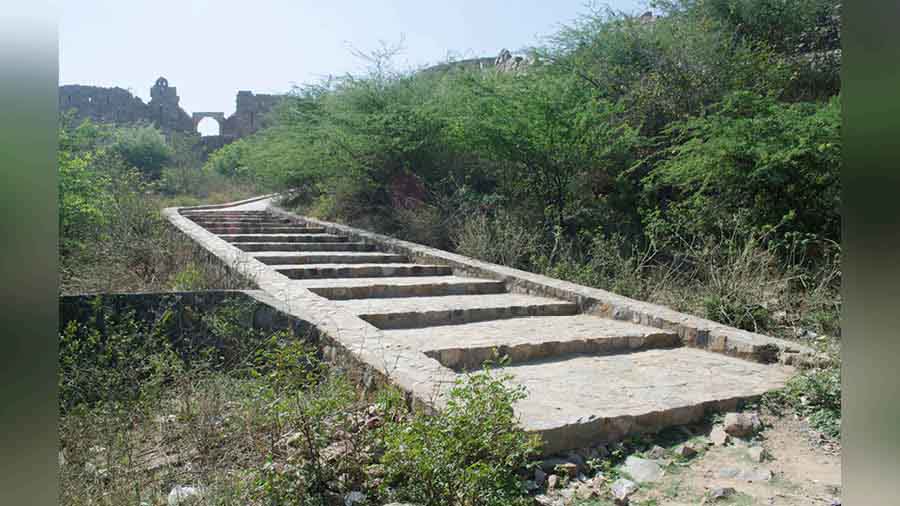
Staircase leading to the Adilabad Fort
The Adilabad Fort is located less than a kilometre west of the Nai Ka Kot. It stands on a small hill, just south of the Kaya Maya Ayurvedic Hospital. A meandering dirt track leads to the base of a staircase leading to the gate of the fort. Also known as Muhammadabad, it was part of Jahanpanah, the fourth city of Delhi. Jahanpanah, literally meaning refuge of the world, was constructed by Muhammad bin Tughlaq.

Inside surface of the boundary wall of Adilabad Fort
Although much smaller in size than the neighboring Tughlaqabad Fort, the Adilabad Fort follows a similar plan and can be seen as a scaled down version of Tughlaqabad Fort. Unlike its neighboring counterpart of Nai ka Kot, the Adilabad Fort is well maintained. The interiors house well-manicured lawns with beautiful gardens. It is a protected monument under the Archaeological Survey of India (ASI) and a portion of the interior serves as a nursery for ASI.

The south-east gate of Adilabad Fort
Nothing much of the structures inside the fort have survived but the outer walls complete with bastions and battlements have survived and so have the couple of gateways. The arched gate on the south-east is complete with guard houses and bastions. Today, it is the only functional gate of the fort, serving as the entry and exit point for the visitors. The less impressive gate on the south-west is presently kept under lock and key.
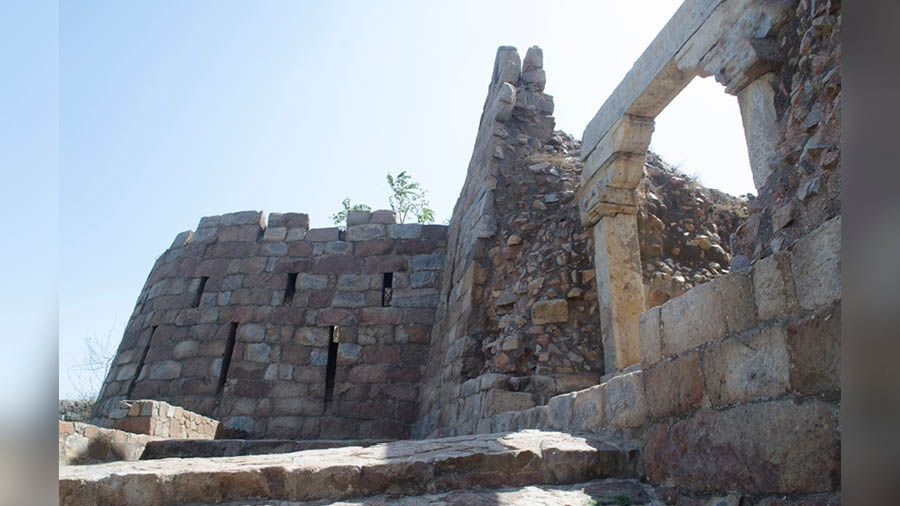
Gateway with bastion, Adilabad Fort
A few of the bastions are approachable by short flights of stairs. Strategically located, these bastions offer a grand view of the surrounding area, complete with urban cityscape mixed with undulating wooded areas. The views extend all the way to the mighty Tughlaqabad Fort and the elegant tomb of Ghiyasuddin Tughlaq, complete with its milk-white marble dome.
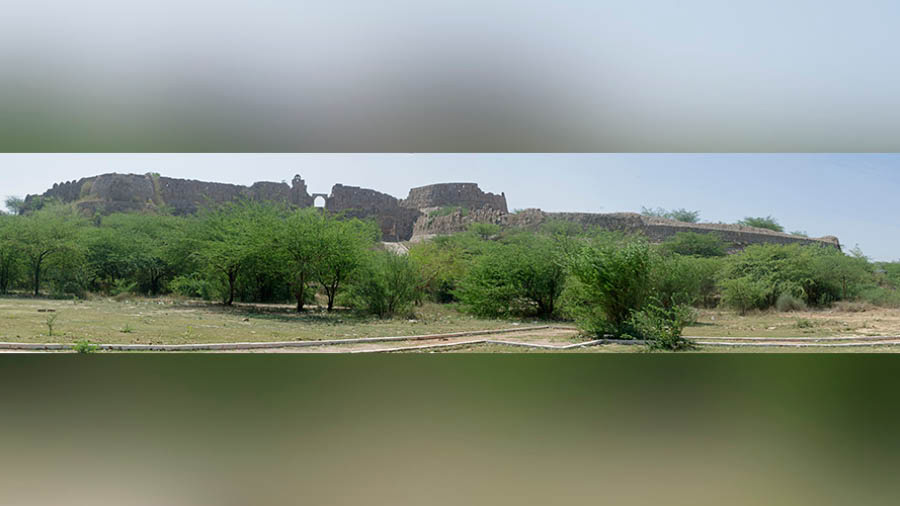
Panoramic view of the Adilabad Fort
Travel Information
- There is no entry fee at both Nai ka Kot and Adilabad Fort
- Tughlaqabad (Violet Line) is the nearest metro
- Autos and buses are available from metro stations. MB Road is the bus stop for Nai ka Kot. Kaya Maya Hospital is the bus stop for Adilabad
- It is advisable to start the tour from Nai ka Kot and then walk towards Adilabad
- For more exploration, you can also visit the Tughlaqabad Fort and the Tomb of Ghiyasuddin Tughlaq
